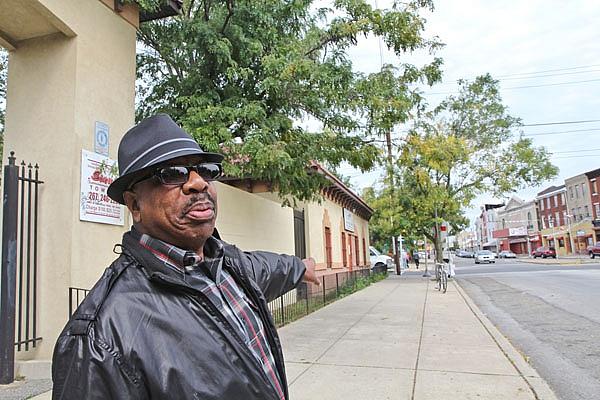Health and the Built Environment

As a radio journalist, I illustrate my stories with sound.
For years, that’s meant documenting the noises typical to hospitals and doctors offices. For a story on hypertension, listeners might hear the pump-and-hiss of a deflating blood pressure cuff. For a report on wait times in the emergency room--maybe you’d get the wail of a receding ambulance siren.
My fellowship project took me to new locations -- beyond the doctor’s office -- and after a year of reporting, I have a new library of “health care” sounds. I now associate the rumble of a subway car and kids playing in the park with disease prevention getting done.
I pitched a reporting project on the “built environment” and health, but soon learned that my listeners, my editors in the newsroom -- and I -- needed a primer. Early on, I spoke with Carolyn Cannuscio, an urban-health disparities researcher at the University of Pennsylvania, to explain the basics.
"It includes things like streets and sidewalks, the design of buildings, the designs of parks, places to play, public spaces, a whole host of decisions about how we want to use our land, so zoning decisions, public investment decisions. It's really bricks and mortar as well as the green that we introduce into our environment,” Cannuscio said.
By 2012, when I started this project, several journalists -- in Philadelphia and nationally -- had written extensively about the “built environment,” food deserts and healthy food access. For my project, I looked to answer the question: “What else in a neighborhood matters to health?”
Turns out walkability, the quality of housing stock in a community and the proximity of exercise and public transit options are also factors.
My series “Designs on Health” includes stories that touch on each of those topics. WHYY in Philadelphia aired the radio and TV reports -- and you’ll find all the stories on NewsWorks.org/designsonhealth.
Here are three steps that helped.
1) Ask new partners to dance
For years, I studded my reporting with quotes for doctors and nurses. These health workers -- and a few policy experts and public relations folks -- had become a reliable stable of dance partners to get my reporting done. They knew my moves; I knew theirs.
With this established arc of reporting, I found myself looking to cultivate relationships with new sources.
I’ve come to believe that city planners, social workers, geographic information systems (GIS) analysts, housing advocates and population researchers are a different kind of health practitioner. These health workers don’t care for individual patients but instead try to measure and diagnose what’s going on in neighborhoods and at workplaces.
They write prescriptions for entire communities that often become fodder for community discussion and occasionally turn into new policies.
Check out my “Designs on Health” story on a Philadelphia zoning law that may curb the number of ads for cigarettes and sugary drinks.
2. Get comfortable with maps
My next step was to better understand the tools that community planners use.
Early in my career, I had to learn to read -- and interrogate -- medical journal articles. For this project, I learned to read maps and interrogate the data sets behind them.
Two sources I recommend:
- The ESRI Health GIS Conference, held annually by mapping and data visualization company ESRI, that brings together health policy and GIS professionals.
- The Summer Institute on GIS and Public Health, hosted by Amy Hillier, a social worker-researcher at the University of Pennsylvania.
The year I attended the Summer Institute, speaker Charlie Branas, from the Cartographic Modeling Lab at the University of Pennsylvania, said: “A map is an incredibly complex database on a single sheet of paper. The story you choose to tell with a map can be compelling, but also potentially misleading.”
That’s a great warning to journalists looking to report stories about neighborhood. What constitutes neighborhood or community differs from situation to situation, person to person.
3. Join the conversations already in progress
When I first set out to write about the built environment and health, I hoped my reporting would start a conversation in Philadelphia about the power of place.
I soon -- humbly -- realized that was an ambitious goal for a stand-alone radio series.
I tweeted, I posted on Facebook and launched the hashtag #placehealth. To my radio ears, #placehealth seemed a more “consumer friendly” way to talk about the topic. But in actuality, there were robust conversations already underway using the hashtags #hia (for health impact assessment) and #builtenvironment.
When my -- admittedly lackluster -- social media efforts finally died, WHYY’s Director of Digital News Don Henry kindly wrote, “creating a nonorganic hashtag may be the hardest thing ever.”
In the end, the series “Designs on Health” received plenty of insider, industry attention from GIS and population health experts, but I’d hoped for more response from everyday listeners.
Next time, I’ll budget time -- and recruit partners -- for a serious, accompanying community engagement effort.

